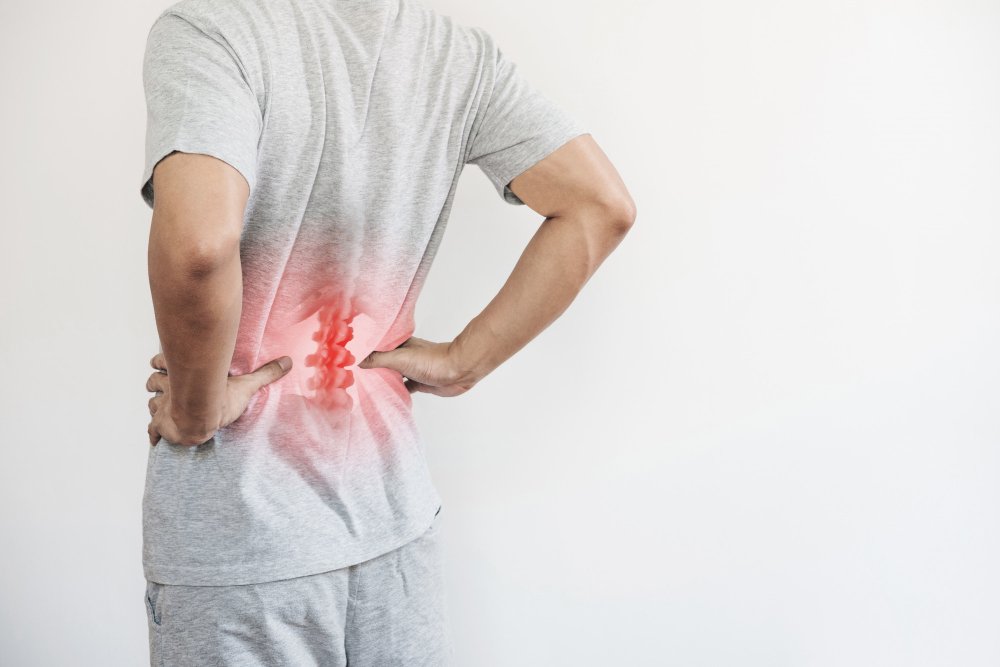Bulging Disc In Lower Back- Details You Shouldn't Overlook
A bulging disc in the lower back, also known as a bulging lumbar disc, is a common spinal condition that can cause significant discomfort and pain. If you're experiencing symptoms associated with a bulging disc in your lower back, you may wonder what causes it, how it's diagnosed and what treatment options are available. This article will explore the causes, symptoms and treatment options for bulging discs in the lower back.
Symptoms Of Bulging Disc In The Lower Back
A bulging disc in the lower back can cause various symptoms that can significantly impact your quality of life. Some of the most common symptoms associated with bulging lumbar discs include:
Lower back pain
Radiating pain into the buttocks, hips and legs
Numbness or tingling in the legs and feet
Muscle weakness in the legs
Difficulty Standing or Walking
These symptoms can vary in severity, depending on the location and size of the bulging disc. If you're experiencing any of these symptoms, it's essential to seek medical attention to determine the cause and appropriate treatment options.
Causes
Bulging discs in the lower back are caused by a combination of factors, including age-related wear and tear, injury or genetics. As we age, the discs in our spine lose water content and become less flexible, making them more susceptible to damage. Injury or trauma to the lower back can also cause a bulging disc.
Other factors that can increase the risk of developing a bulging disc in the lower back include:
Poor posture and body mechanics
Obesity
Smoking
Repetitive lifting or bending
Degenerative disc disease
Diagnosis
To diagnose a bulging disc in the lower back, your doctor will perform a physical exam and review your medical history. They may also order imaging tests such as an MRI or CT scan to confirm the diagnosis and assess the severity of the condition.
Treatment Options For Bulging Discs In The Lower Back
The treatment for a bulging disc in the lower back will depend on the severity of the condition and the symptoms you're experiencing. The following are some standard treatment options for bulging lumbar discs:
Rest And Activity Modification
In mild cases, taking a break from physical activities and modifying your posture may help alleviate the symptoms associated with a bulging disc in the lower back. This may involve avoiding heavy lifting or bending, taking frequent breaks and adjusting your posture when sitting or standing.
Physical Therapy
Physical therapy can be an effective treatment for a bulging disc in the lower back. Physical therapists can design exercises and stretch to help alleviate pain, improve flexibility and strengthen the muscles around the affected area.
Medications
Pain medications, such as nonsteroidal anti-inflammatory drugs (NSAIDs), can help alleviate pain associated with a bulging disc in the lower back. Pain management experts can sometimes use corticosteroid injections for muscle relaxants or may be recommended to reduce inflammation and pain.
Surgery
In severe cases, doctors may suggest surgery to treat a bulging disc in the lower back. This may involve a discectomy, which involves removing the affected portion of the disc, or a spinal fusion, which involves fusing two or more vertebrae to stabilize the spine.
Diagnostic Possibilities
Magnetic Resonance Imaging (MRI) Scan:
An MRI scan uses a powerful magnetic field and radio waves to create detailed spine images. This test is commonly used to diagnose a bulging disc in the lower back as it can show the disc and its surrounding structures in great detail.
Myelogram:
A myelogram is an imaging test that involves injecting a contrast dye into the spinal canal to make the nerves and spinal cord more visible on an X-ray or CT scan. This test can help to identify any spinal cord or nerve root compression caused by a bulging disc.
Computed Tomography (CT) scan:
A CT scan uses X-rays to create detailed images of the spine. This test can help identify spinal structure abnormalities, including bulging discs.
Electromyography (EMG) & Nerve Conduction Studies (NCS):
An EMG and NCS are tests that can help to identify any nerve damage or dysfunction caused by a bulging disc. An EMG involves inserting a needle electrode into the muscles to measure electrical activity, while NCS involves applying small electric shocks to the nerves to measure their response.
X-rays:
X-rays can help to identify any abnormalities in the spine's bones, such as fractures or deformities, but they are less helpful in diagnosing a bulging disc.
Take The First Step Toward Healing
A bulging disc in the lower back can cause significant discomfort and pain, but several treatment options for bulging discs in the lower back are available to alleviate symptoms and improve your quality of life. Oklahoma Pain Treatment Centers is your place if you're experiencing symptoms associated with a bulging disc in your lower back.
**Disclaimer: These tips are not advised or suggested by doctors. The products that are promoted here are not FDA-CERTIFIED to treat, cure or prevent any disease.

